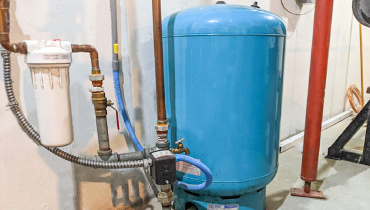
Turning on the shower to discover a slow, sad trickle of water is no way to start your morning! You may be wondering (or yelling loudly to whoever can hear), “WHY IS MY WATER PRESSURE LOW?” Once you’ve decided that an invigorating shower is not in your immediate future, it’s time to figure out what the problem is and how to increase the water pressure in your house sooner than later.
Keep reading to learn how to pinpoint the cause of low water pressure if you are on a municipal water supply. If you have a private well, check out How to Increase Water Pressure From a Well.
Whatever your water source, contact your local Mr. Rooter® Plumbing at (855) 982-2028 for help with low water pressure.
What Causes Low Water Pressure and How to Fix It
Unless you’ve experienced low water pressure at home, you’ve probably never given a lot of thought to the issue. But the first time you turn on the tap to find a trickle instead of a satisfying flow, you are on a mission to find a solution. To begin your investigation, determine if the low water pressure is happening with one faucet or appliance, in one area of the home, or if it is a house-wide issue.
Here are some of the common factors that can lead to low water pressure, how to identify which issue is to blame, and tips for how to increase water pressure in your house:
- Too Many People, Too Little Water Pressure
Other family members, or even your neighbors, could be to blame for the lack of water pressure coming through your fixtures or appliances. Here are some signs, pointing to a water supply that isn’t keeping up with demand:- The low water pressure only happens at certain times of the day. In this case, it’s possible your neighbors are using water too and the municipal water supply can’t quite keep up. You may need to contact your local water supplier to find out what they can do to fix the problem.
- You only notice an issue when a family member is using water simultaneously or while another appliance is running in the home. It may be a good idea to consider installing a water pressure booster, which uses an electric pump and pressure tank to increase water pressure throughout your home.
- Low Water Pressure in One Fixture
If you’ve figured out there is just one faucet or showerhead that isn’t getting the water pressure you want, you may need to clean or replace the fixture. Over time and regular use, a faucet or showerhead can accumulate mineral deposit buildups, such as limestone, sediment, or rust that can inhibit the free flow of water. Before purchasing a new one, try removing and cleaning the filter or aerator on the fixture to see if that does the trick. If not, replacing the faulty fixture should solve the low water pressure problem. - Pipe Leak or Clog
If the water pressure is low in just one room of your home, you may have a plumbing leak or blockage in that area. Look under the sink and behind water-using appliances for signs of water dripping or pooling. Losing water from a crack or hole in the plumbing before it reaches your fixture diminishes water pressure and can also lead to extensive water damage. If you notice signs of a leak, your best plan of action is to contact your local Mr. Rooter for plumbing repair to fix the leak, which will restore water pressure. - Main Water Valve Issue
Are you experiencing low water pressure in all areas of your home? Before you begin investigating more complex plumbing problems like hot water tank issues, it’s a good idea to check your main water valve to ensure it is fully open. It could be partially shut or even shut off completely, which will create a standstill in your water flow.
If you don’t already know where it is, you may need to check in a few different places for the main water valve. Begin your search by checking the interior wall on the same side the water supply pipe comes in from the water meter. It could also be inside the garage or near the water heater. Once you find it, open and close it a few times and finish by opening as far as it can go. If the handle looks like a lever, push the lever until it is parallel to the pipe. If it has a handle like what you use to turn on a hose, turn the handle counterclockwise until it is fully open. Then, check to see if your water pressure is restored.
- Hot Water Tank Problems
Check around your hot water tank for signs of leaks that may be reducing water pressure in your home. Just like your faucets, the valves on your water tank can accumulate mineral deposits over time. The buildup can then keep the valves from sealing properly, which tends to result in water leaks. To clear away the deposits, try opening and closing the valves several times before checking to see if it fixes your water pressure.
Turn to the Pros to Increase Water Pressure in Your House
If your house is still suffering from low water pressure after trying these tricks, it’s time to get in touch with your local Mr. Rooter. Our team of experienced, licensed plumbers will find out what is causing low water pressure in your home and repair it. Schedule an estimate for plumbing services online now or call us to speak to a friendly Mr. Rooter service professional near you.
Now that you know how to restore water pressure for a more satisfying shower, get the cleaning tips you need to make your bathroom shine.

